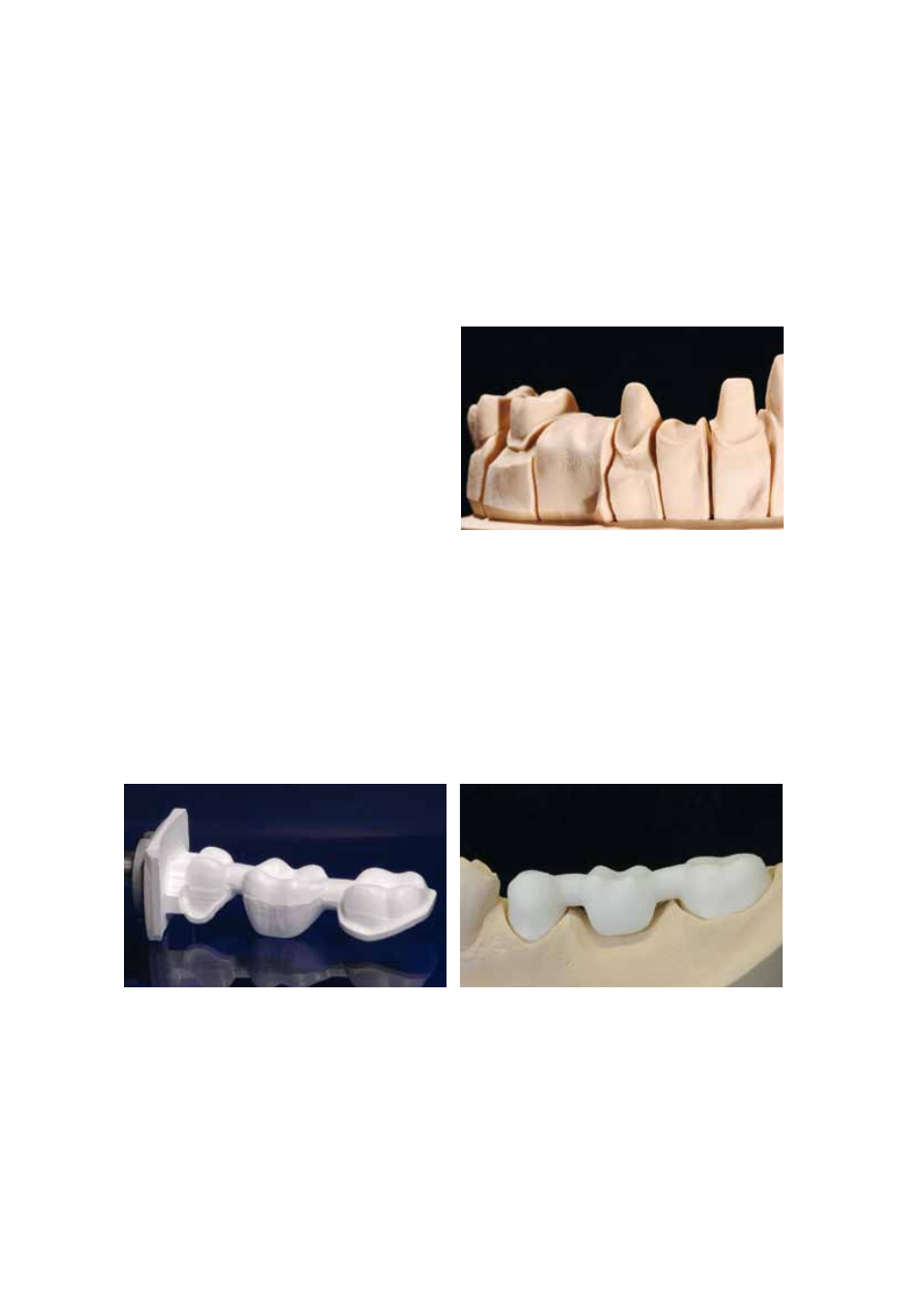Ivoclar Vivadent SR Adoro User Manual
Page 64

64
SR Adoro Step by Step
Starting Situation / Layer Thickness / Framework Design
Starting situation
Fabricate a working model with removable segments as usual. The directions of the manufacturers of the different
CAD/CAM systems regarding the plaster to be used must be observed.
Important for die preparation:
– Check the radius of the incisal/occlusal edge on the
prepared dies (maxilla and mandible).
– The prepared incisal edge should be at least as thick as
the diameter of the bur used in the cavity during the
CAD/CAM process.
– If the incisal edge of the prepared die is thinner than the
diameter of the bur, the incisal edge has to be blocked
out accordingly.
– Also observe the information provided by the
manufacturer of the CAD/CAM system regarding the
die geometry.
– Basically, only frameworks and implant superstructures of
yttrium oxide, partially stabilized, sintered, or HIP zirconium
oxide in a CTE range of 10.5–11.0 x 10
-6
K
-1
(100–500 °C) may be fabricated.
Framework design
The framework reflects the reduced anatomical tooth shape (see page 32 for tooth shape-supporting contouring). As a
result, the composite can be applied in an even layer and will consequently be appropriately supported. The requirements
of the different alloys have to be taken into account.
Framework design
Design the framework in a reduced supported shape.
Milled IPS e.max ZirCAD framework
Starting situation for ZrO
2
-supported SR Adoro restorations
A model with detachable segments is used as the basis
